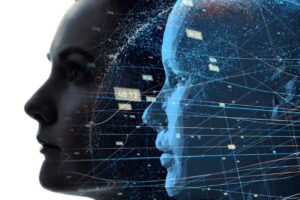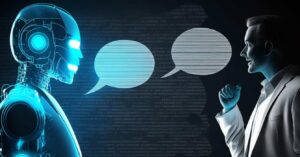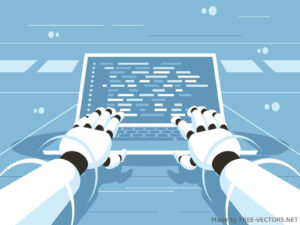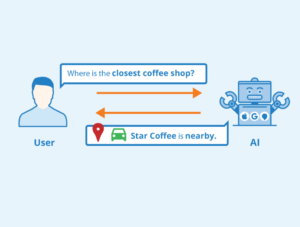Web3: What is it? Is it a real thing? All you need to know
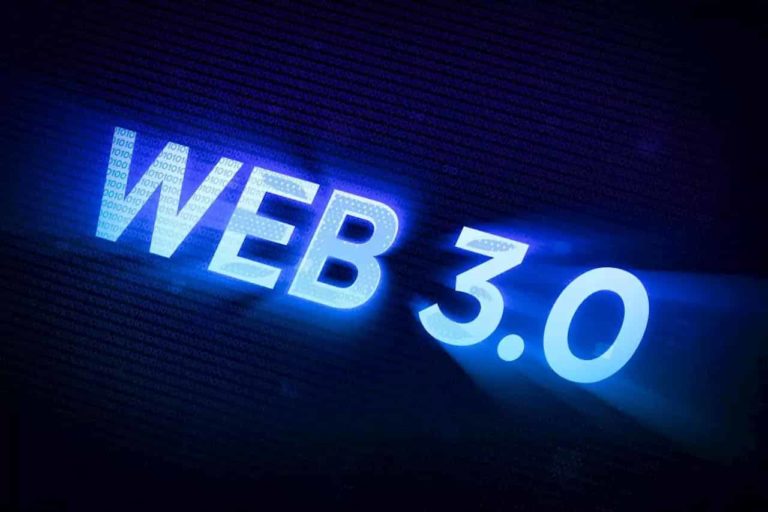
Web3 or Web3.0 refers to the third iteration of the World Wide Web. It references the advancements in computing technology over the years which go beyond Web2.0.
This idea of a new Internet is also championed by many who feel that the current Web is too centralized in the hands of a few companies known as “Big Tech”.
For many, decentralization of the web is the solution. Other Web3 concepts include the Internet of Things, the Metaverse, artificial intelligence, and the Blockchain. This post looks at how they all fit together.
Evolution of the Web
The web comprises of hardware and software that work together to create the international network of computers that we call the Internet. And as you know, technology is rapidly evolving – some, even exponentially.
So, when ARPANET started in 1969, the memory capacity of the Honeywell DDP-516 used was a 16-bit mini computer with a mere 24KB of memory and 2MHz CPU.
As hardware got better over the years, so did the software. And today, there are CPUs with dozens of cores at GHz speeds. Plus, relatively limitless system memory. This did not happen overnight, it evolved gradually, and so did the web.
The first generation Internet or Web1.0 consisted basically of static sites served to web clients, who request the information.
The second web generation or Web2.0 includes input from web users to create more data to serve to others. This gave birth to the social web, as well as the programmable web of APIs and other more complex services.
A third-generation Internet now looms, but its definite outcome will rest on the state of currently developing technologies. Because computing hardware has gotten so good and affordable that a Samsung Galaxy smartphone today is way more powerful than the Cray-1 from 1975, the world’s fastest supercomputer back then.
Web3 Vs The Metaverse
The third web iteration is not the Metaverse. But the Metaverse could very likely be an integral part of it. The Metaverse centers on how users will experience the future Internet, such as with virtual and augmented-reality systems.
How the future Internet will function, however, or the parts that will make it up is what Web3 is all about. A most probable bet is that augmented reality will fuse Web2.0 with IoT and AI to create an outstanding Web3.0 experience.
Web3 Vs IoT
The Internet of Things or IoT is also not Web3, but it could be an integral part of it. The IoT is a collection of machines or devices that function independently but can communicate with each other via a radio network.
IoT devices connect your home or workspace to networks that either help you to live better lives or work more efficiently. Some good examples are the Amazon Echo and Google Home for households, and smart factories for productivity.
Web3 Vs AI
Artificial Intelligence is another computing frontier that is evolving at a very fast rate. From just a few decades ago when hardware issues limited the scope of AI applications, the abundance of memory and CPU time today makes even smartphones capable of impressive AI features.
Yet, the more exciting features lie with cloud AI systems that leverage the power of cloud computing and Tier-1 broadband speeds to form a new part of the Internet infrastructure. Modern data science and AI have come to stay, and they are also an integral part of Web3.
Web3 Vs The Blockchain
The Blockchain is the decentralization technology that makes crypto networks like Bitcoin and Ethereum possible. But while many crypto fans rave about the possible part of Blockchain technology in developing the next iteration of web infrastructure, there are a few points to note.
First, Blockchains can be resource-intensive. With the Ethereum and Bitcoin blockchains consuming more energy than many countries combined, a single Blockchain to power the entire web is currently not feasible.
Still, the Blockchain remains a very reliable means of recording transactions between entities. So, if there was a Metaverse that all companies could build their virtual estates on, the Blockchain and cryptocurrencies could help a lot.
The Problem with Big Tech
“My wife asked me why I spoke so softly in the house. I said I was afraid Mark Zuckerberg was listening! She laughed. I laughed.
Alexa laughed.
Siri laughed.”
The problem with most tech companies is their narcissism. First, they are sweet and lure you to register an account or buy whatever they are selling. Then, once they become tech giants, they turn around to screw you, their other users, and 3rd-party developers.
This is the major issue with the current Web2.0 setup as it stands. Big Tech – that is GAMAM or Google, Amazon, Meta, Apple, and Microsoft – can practically do as they please.
They can block your account or app, cancel your contract or subscription, sell your data, or wreck your business with silly censors and administration issues. This has led many developers to become wary of building their business on such centralized platforms.
Surely, these centralized platforms of big tech companies come with many benefits. But since the platforms belong to single corporations, the fate of a community or business then rests on a few individuals.
One solution to the Big Tech tyranny, then, is a decentralized architecture that serves as a base for a new Internet iteration. One in which the creators of all online content own their work and have the right to choose what to do with it.
To this end, many are proposing a new Blockchain-centered infrastructure for the Internet. It could be modeled after crypto networks, with decentralization, open-source, and freedom being core features.
Tokenomics & Decentralization
The centralization of data is the current issue with Web2.0 technology, as many developers feel left out by the platform owners.
Decentralization offers a solution to this problem, with crypto tokens guaranteeing all contributors to a project get their fair share of the created value.
However, changing the current way of doing things into this new decentralized system is not going to be easy. First, there is the incumbent Big Tech group, which controls armies of developers that are as smart as any FOSS hacker.
Secondly, there are politicians and governments, who have proven time and again, that they are not as much interested in the peoples’ welfare as they are in lining their pockets. Plus, the increasing regulation of crypto networks across the world shows just how determined the old powers are in maintaining the status quo.
The possible result, then, is that while the ownership structure of the next generation of Internet game changers might be different from what we have today, some fundamental structures like the clustering of power and wealth will remain.
The Tokenized Enterprise
Imagine for a brief moment that Google open-sources its search algorithm. And in addition to that, pays you a G-token each time you view or interact with an ad.
Now, Imagine Facebook also paying you a cut from its ad revenue in Face-tokens, simply for browsing the site and posting great pictures.
While these scenarios seem unlikely given the corporate natures of these web giants, they are not impossible. A tokenized enterprise is not a far-fetched idea. It is more like a cyber co-operative society backed by Blockchain technology.
Credit unions and insurance corporations might spring to mind when hearing the word “co-operative”, but there is much more to this enterprise model. The two largest retail chains in Switzerland, for instance, are also cooperative societies and they are hugely successful.
This goes a long way to show the potential of decentralized Web3.0 enterprises.
The Features of Web3
Here is a look at the most promising features of a Web3.0 environment. They are in no specific order and are merely speculative.
- Decentralization – There is no centralized control and this gives users more freedom. DApps (decentralized apps) and DeFi (decentralized finance) evolve from this.
- No Permission to use – A fully decentralized web requires no central gatekeepers.
- Open source – Which has been proven to produce better and more secure systems.
- Developer Incentive – Tokens can entice more developers to get involved in the project. This means more hands on deck, better features, and quality.
- User incentive – To create higher quality content for better token earnings.
- No censorship – There are no dictators to impose their wills on others. Everyone works on public protocols.
- More community control – Those with the vision to shape the future can make their voices heard. Token-holder voting is also a thing.
- Augmented reality – The Metaverse will fuse virtual and physical reality.
- Better bots – Improvements in AI continue to produce better bots.
The Technical Challenges
All the different technologies that make up Web3 are understandably still evolving, and this means there are issues and hurdles to overcome. Here are some of these major challenges they face.
- Scaling – Scaling a dApp or decentralized app is easier said than done. But should get better with falling computing costs.
- Speed – Blockchains still have speed issues when compared to competing technologies.
- Centralization – Even a decentralized network will rely on centralized crypto exchanges.
- Data Privacy – What to do with Blockchain data.
- Theft – Crypto-asset thefts are on the rise.
- Energy – Current crypto mining is highly energy inefficient.
Potential Social Dangers of Web3
There are also potential social dangers in a hugely decentralized web3 scenario. These dangers will mostly come from the difficulty in regulating such a system. They include:
- Cyber-crime
- Child abuse
- Hate speech
- Governments
- New variants
Notable Web3 Apps
- DeSo – decentralized social Blockchain
- Filecoin – decentralized storage
- Braintrust – decentralized talent network
- Brave browser – private browser with a crypto wallet and paid ads
- Golem – decentralized market for computing power.
- Helium – IoT Wifi networks powered by the people
- Opensea – marketplace for NFTs and collectibles
- Unstoppable domains – NFT registry for Web3 and crypto addresses
- Ocean Protocol – Data publishing and consumption
- Rarible – NFTs and collectibles
- Metamask – crypto wallet
- Trustwallet – crypto wallet
- IPFS – The InterPlanetary file System
Conclusion
With bandwidth, storage, and computing prices crashing to near $0, it is only a matter of time before the next iteration of the World Wide Web arrives. How it plays out though, is a completely different matter. But blockchains, IoTs, and AI will most likely be parts of it.
Surely, the Internet might become more community-driven, with tokenized enterprises allowing developers and content creators to earn more from their work. However, we should not forget history’s lessons on human greed and capitalism. There will always be one or a few persons, who will try to grab as much as they can for themselves.

